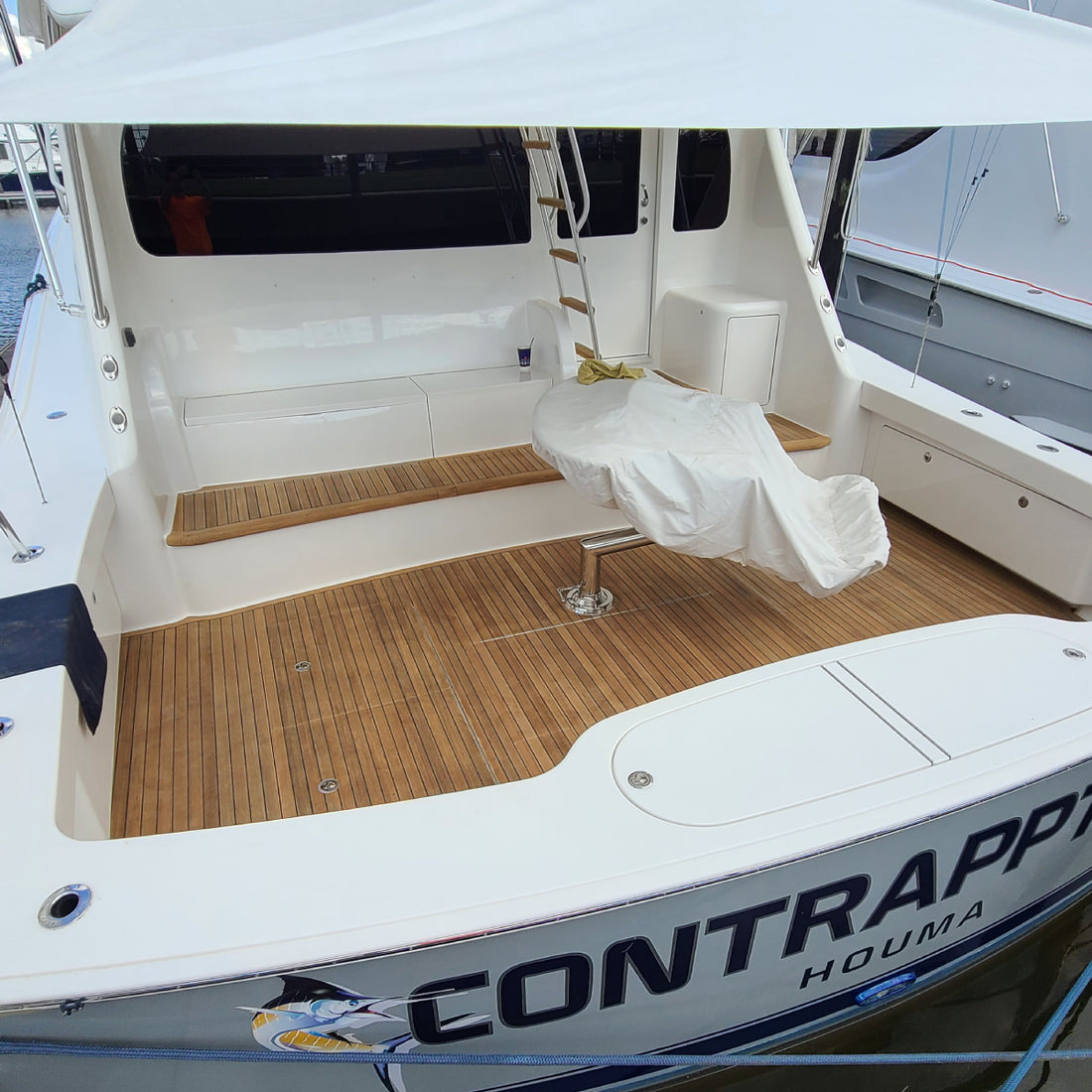
Deck Sanding: A Crucial Step for Maintaining Your Vessel's Aesthetic and Integrity
When it comes to maintaining a vessel, deck sanding is a task that often gets overlooked.
Yet, for anyone passionate about their maritime adventures, understanding the importance of this process is crucial.
It's not just about keeping the deck looking good; it's about preserving the integrity and safety of your boat.
Today, we're diving deep into the world of deck sanding, specifically focusing on its importance in marine applications.
Whether you're a seasoned sailor or a new boat owner, this guide is tailored to help you grasp why, when, and how deck sanding should be a priority in your vessel maintenance routine.
Why is Deck Sanding Important?
Deck sanding is more than a cosmetic fix; it's a preventative measure that can save you time and money in the long run.
The marine environment is harsh, with saltwater, sun, and humidity constantly attacking the wood of your deck.
Over time, this exposure can lead to the wood becoming weathered, rough, and grayed, losing its natural oils and protection.
Sanding removes the damaged outer layer of the wood, revealing fresh, healthy wood beneath.
This not only enhances the appearance of your deck but also extends its life by preventing rot, splintering, and other damage.
The Right Time for Deck Sanding
Timing is everything when it comes to deck sanding.
Ideally, this process should be part of your regular maintenance routine, but there are a few signs that indicate your deck desperately needs sanding:
- The wood appears gray and lifeless.
- The surface feels rough or splintered.
- The previous finish is peeling or flaking off.
- You're preparing to apply a new sealant or finish.
If you notice any of these signs, it's time to consider sanding your deck.
Early spring or late fall, when the weather is cooler and less humid, can be the best times to undertake this task, preparing your vessel for the upcoming season.
How to Sand Your Deck Effectively
Deck sanding, especially on a boat, requires a careful approach to avoid damaging the wood.
Here's a step-by-step guide to ensure you do it right:
1. Preparation
Start by removing all furniture, fixtures, and fittings from the deck.
Clean the surface thoroughly to remove dirt, salt, and grime.
This step ensures that you have a clear working area and prevents sanding dirt into the wood.
2. Choosing the Right Tools
For marine deck sanding, using the right tools is critical.
A hand-held orbital sander with variable speed control is ideal for most decks.
It's essential to select the correct grit of sandpaper.
Begin with a coarser grit to remove the old finish and damaged wood, then move to a finer grit for a smooth finish.
3. Sanding Process
Always sand in the direction of the wood grain to avoid scratches that are difficult to remove.
Start with the edges and tight spaces using a smaller hand sander or sanding block, then move on to the larger areas with the orbital sander.
Regularly check the surface to ensure an even sanding and avoid over-sanding, which can thin down the wood and weaken the deck structure.
4. Cleaning Up
After sanding, it's crucial to remove all the dust from the deck.
Use a soft brush or a vacuum with a brush attachment, followed by a damp cloth to pick up any remaining dust.
This step is vital before applying any finish or sealant, as leftover dust can hinder the adhesion of these products.
5. Finishing Touches
Once the deck is sanded and clean, applying a high-quality marine sealant or varnish is recommended.
This will protect the wood from the elements and enhance its natural beauty.
Choose a product specifically designed for marine environments to ensure the best protection and durability.
Why Dillweeds Custom Wood for Your Marine Deck Sanding?
At Dillweeds Custom Wood, we specialize in marine woodworking projects, including deck sanding.
Our expertise and attention to detail ensure that your vessel's deck is not only aesthetically pleasing but also protected and preserved against the harsh marine environment.
We understand the unique challenges of working with marine wood and offer tailored solutions to meet your specific needs, whether it's a minor touch-up or a full deck restoration.
Choosing Dillweeds Custom Wood means opting for quality, durability, and beauty for your vessel.
Our commitment to excellence and customer satisfaction makes us the ideal partner for your deck sanding and other marine woodworking needs.
Conclusion
Deck sanding is an essential maintenance task that should not be overlooked by any boat owner.
It preserves the deck's beauty, ensures its safety, and extends its life.
With the right approach and the expertise of professionals like Dillweeds Custom Wood, you can maintain your vessel's deck in top condition, ready to face the challenges of the marine environment.
Remember, a well-maintained deck is not just about aesthetics; it's about ensuring that every voyage is safe, enjoyable, and memorable.
Ready to give your deck the attention it deserves?
Reach out to us, and let's make it happen.
